Valves UK
Actreg Pneumatic Actuator
Actreg Pneumatic Actuator
Couldn't load pickup availability
The Actreg Pneumatic Actuator is a precision-engineered rack and pinion actuator designed for reliable quarter-turn automation of valves. Built to perform in the most demanding industrial environments, it combines robust construction with high-performance control. Its compact and symmetrical design ensures consistent torque output in both double acting and spring return models.
Manufactured from corrosion-resistant materials with optional surface coatings, Actreg actuators are ideal for use in applications such as oil and gas, water treatment, chemical processing, and general industry. Compatible with ISO 5211 and Namur standards, they are designed for easy mounting of valves, solenoids, and accessories.
Key Features:
- Rack & Pinion Mechanism: Provides balanced torque throughout the 90° stroke
- Symmetrical Design: Allows for reversible mounting and uniform performance in both directions
- Modular Construction: Enables easy conversion between spring return and double acting operation
- ISO & Namur Interfaces: Ensures easy mounting to valves and control accessories
- Corrosion-Resistant Build: Available with special coatings for harsh environments
- High Cycle Life: Engineered for long-term durability and reduced maintenance
- Customisable Options: Tailored torque ranges, travel stops, and temperature ratings available
Technical Specifications:
- Actuation Type: Pneumatic – Rack and Pinion
- Rotation: 90° standard (with optional travel stops for ±5° adjustment)
- Operation: Double Acting or Spring Return
- Body Material: Extruded Aluminium (anodised or epoxy-coated)
- Mounting Interface: ISO 5211
- Top Mount Interface: Namur
- Operating Pressure: 2.5 to 8 bar
- Temperature Range: -20°C to +80°C (optional high/low temp versions available)
- Applications: Oil & gas, water, chemical, HVAC, food processing
Share
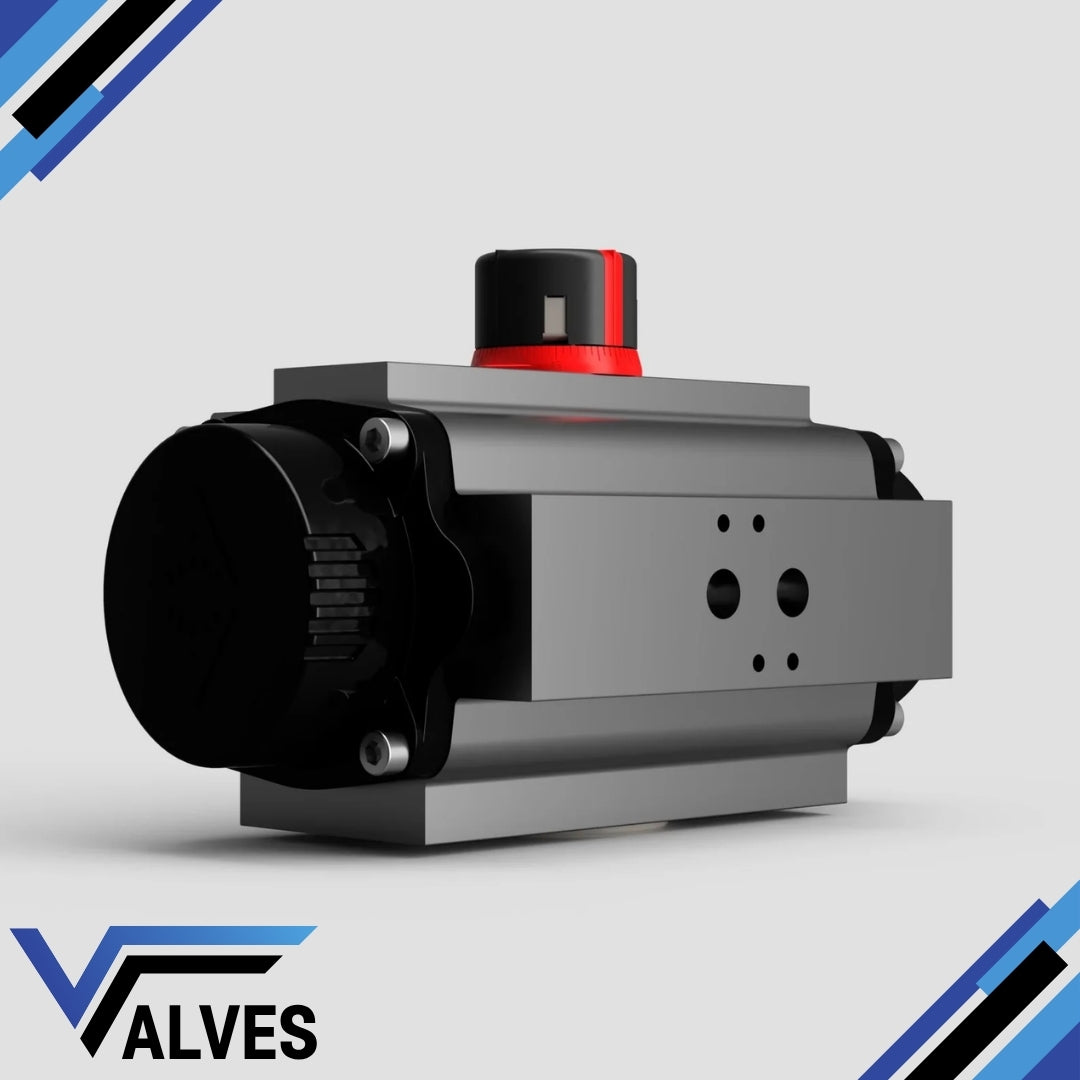
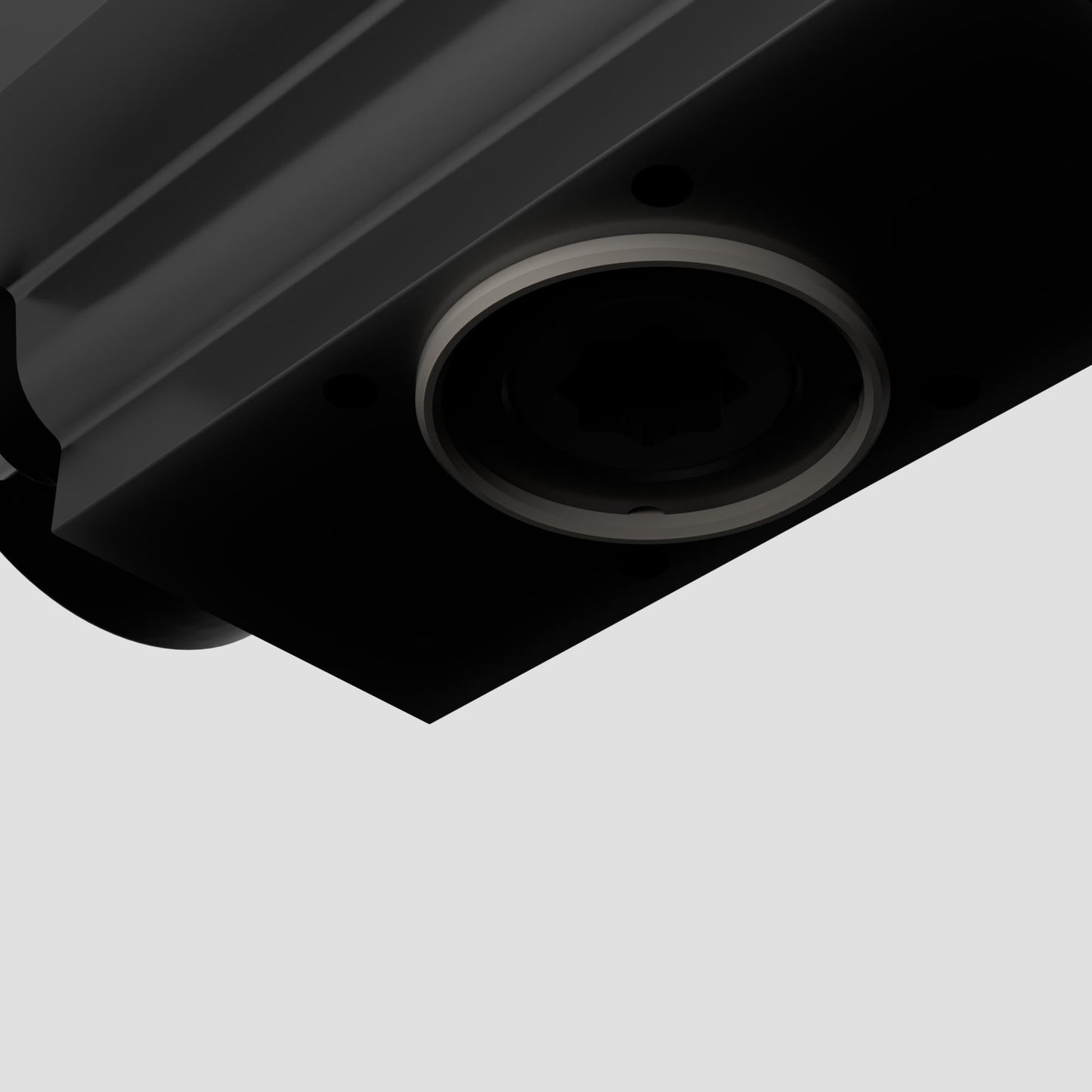
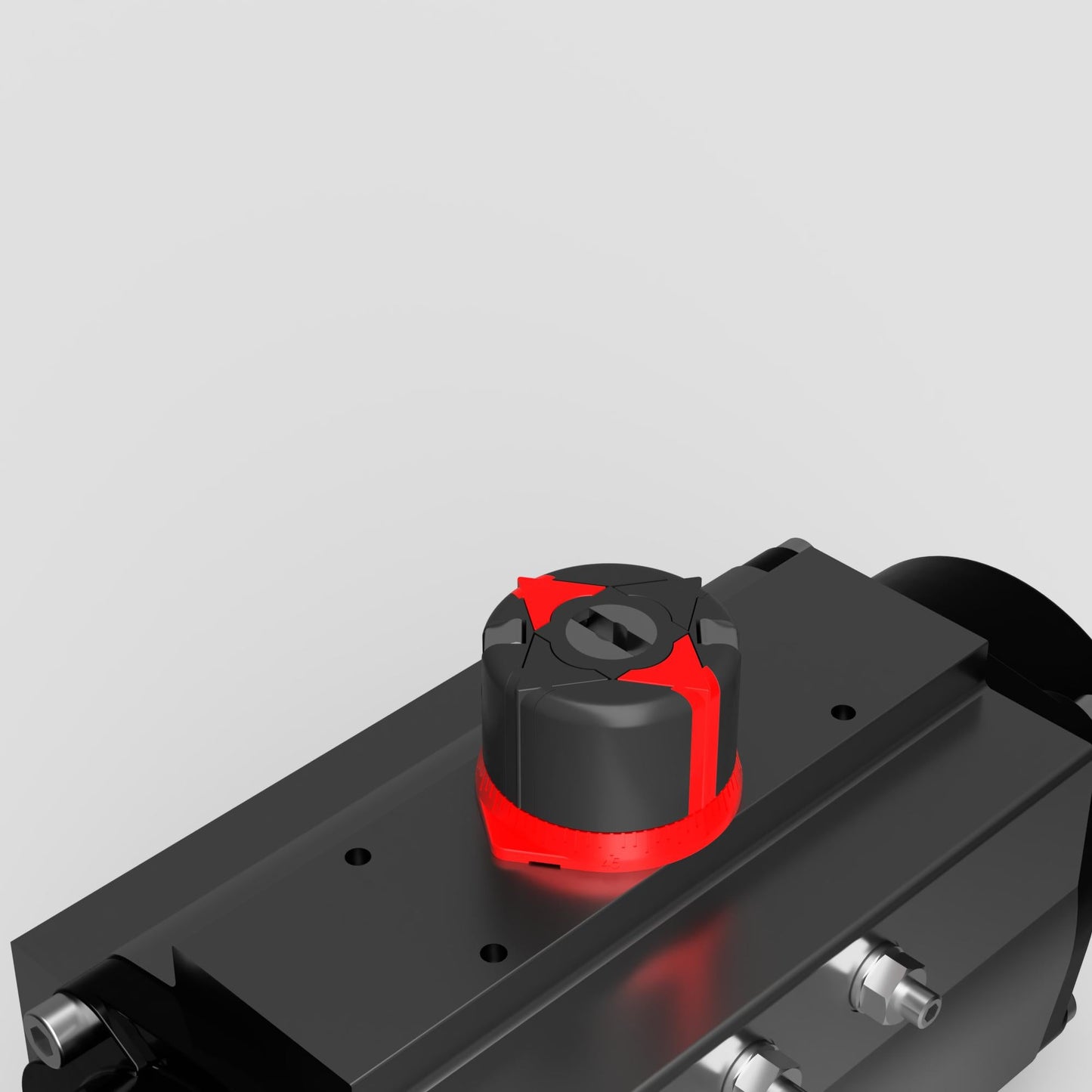
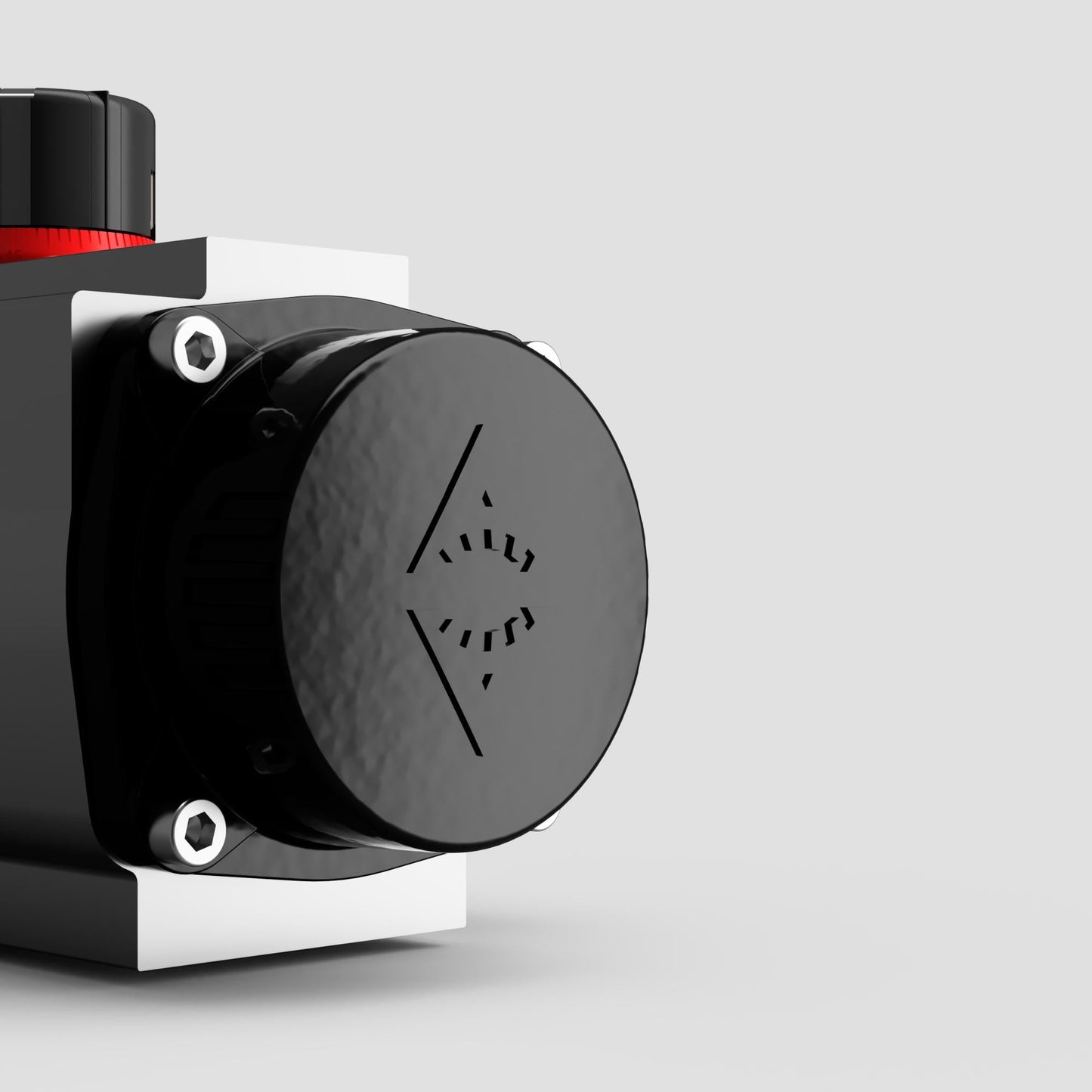
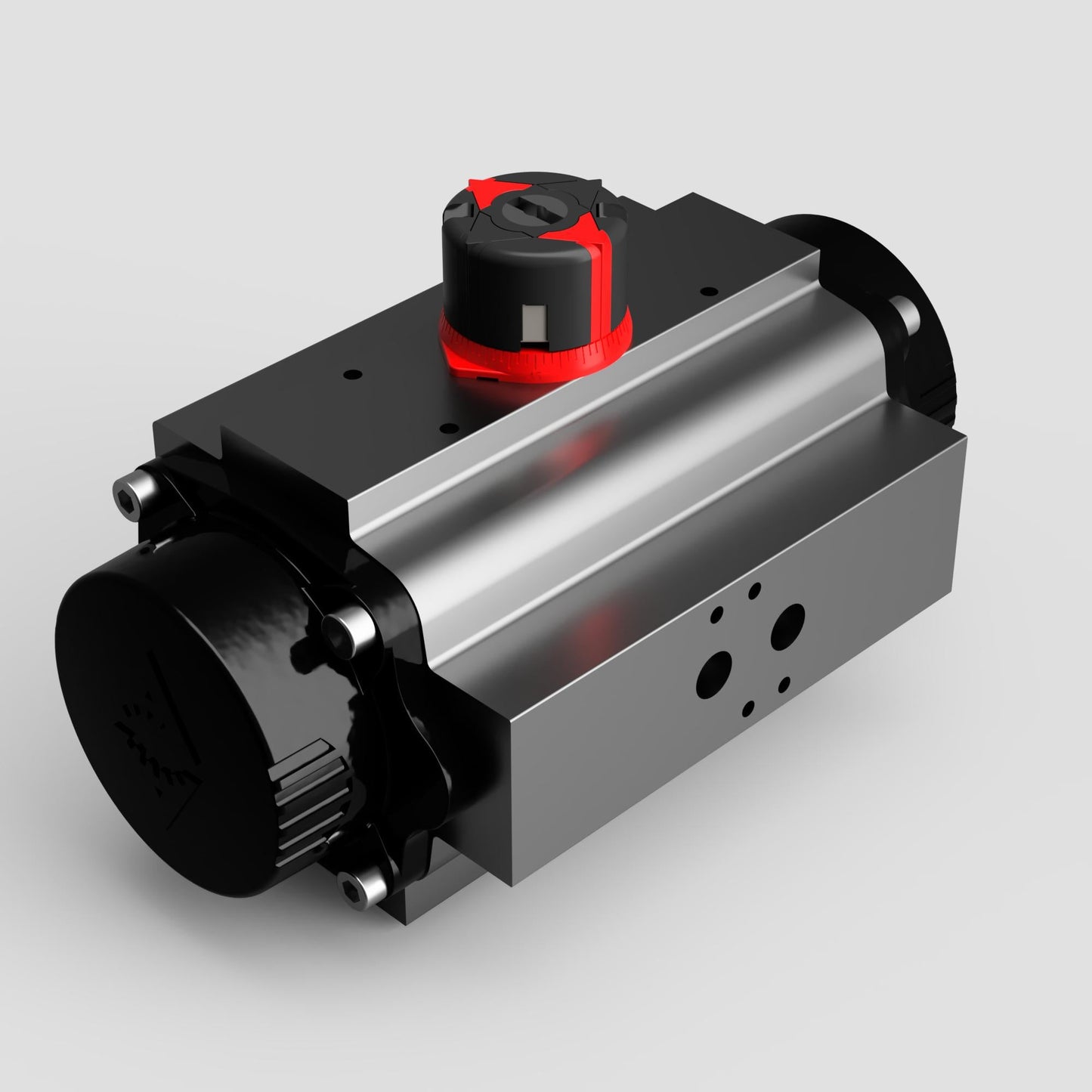
Enquire Online!
FAQ's
What is the difference between a valve and an actuator?
What types of actuators are available?
The main types of actuators are:
Pneumatic actuators – use compressed air for fast, reliable operation.
Electric actuators – use electrical power for precise control.
Hydraulic actuators – use fluid pressure for high-torque applications.
Each type offers unique advantages depending on the environment, media, and system control needs.
How do I choose the right actuator for my valve?
To select the correct actuator, consider:
Valve type and torque requirement
Power source available (air, electric, or hydraulic)
Operating environment (temperature, humidity, hazardous area)
Control signal type (on/off or modulating)
Matching actuator torque and compatibility with the valve’s ISO mounting ensures reliable performance.
What are the main types of valves used in automation?
The most common valves in automated systems include:
Ball valves – for tight shutoff and quick operation.
Butterfly valves – for larger flow control with compact design.
Globe valves – for precise throttling and flow regulation.
Check valves – to prevent backflow.
Gate valves – for full bore flow isolation.
What’s the difference between a double-acting and spring-return actuator?
Double-acting actuators use air (or power) to both open and close the valve.
Spring-return actuators use air to open (or close) the valve, and a built-in spring to automatically return it to a safe position when power or air is lost — ideal for fail-safe operation.
How often should valves and actuators be serviced?
Regular maintenance intervals depend on operating conditions, but a good rule of thumb is to inspect every 6–12 months.
This includes checking for leaks, lubrication, seal wear, and actuator responsiveness to prevent unexpected downtime.





